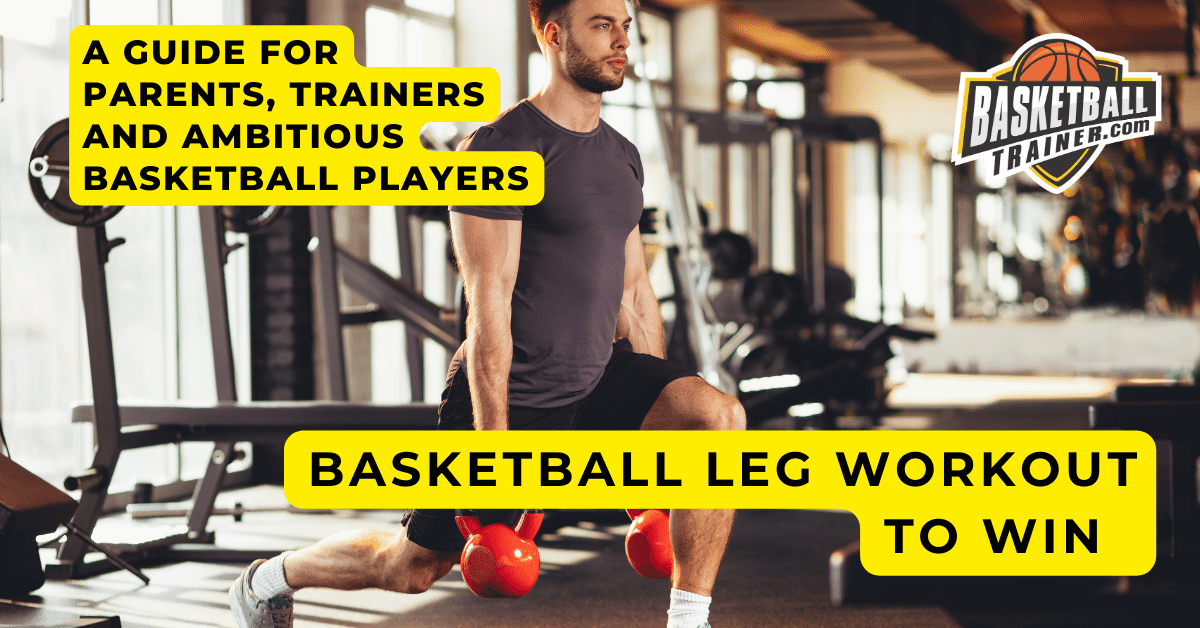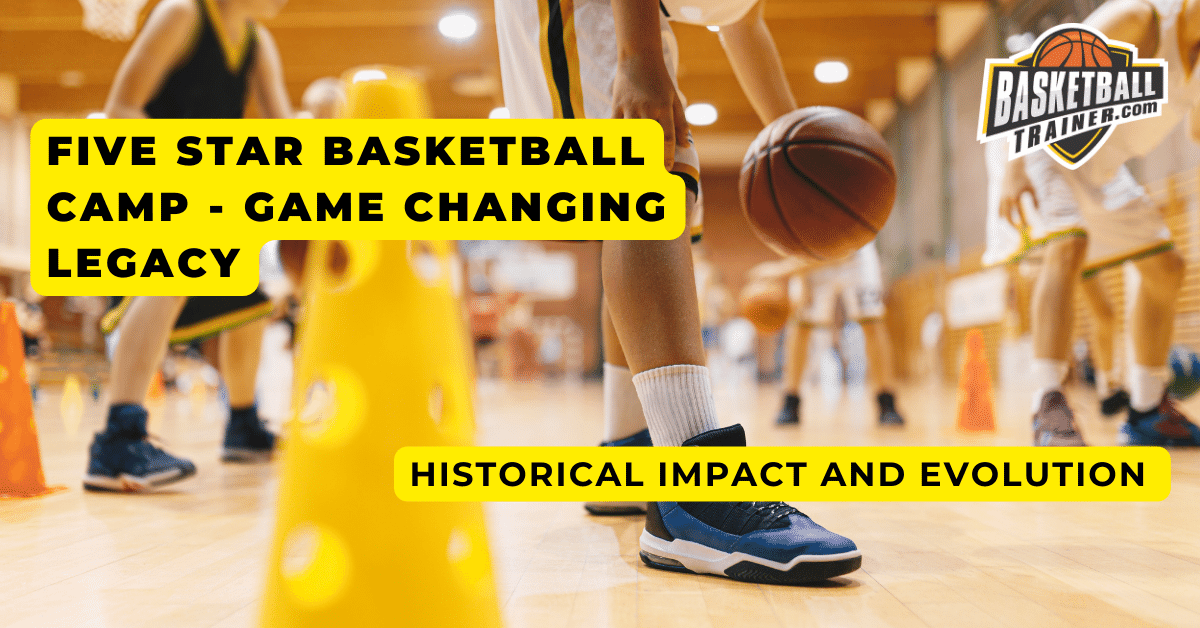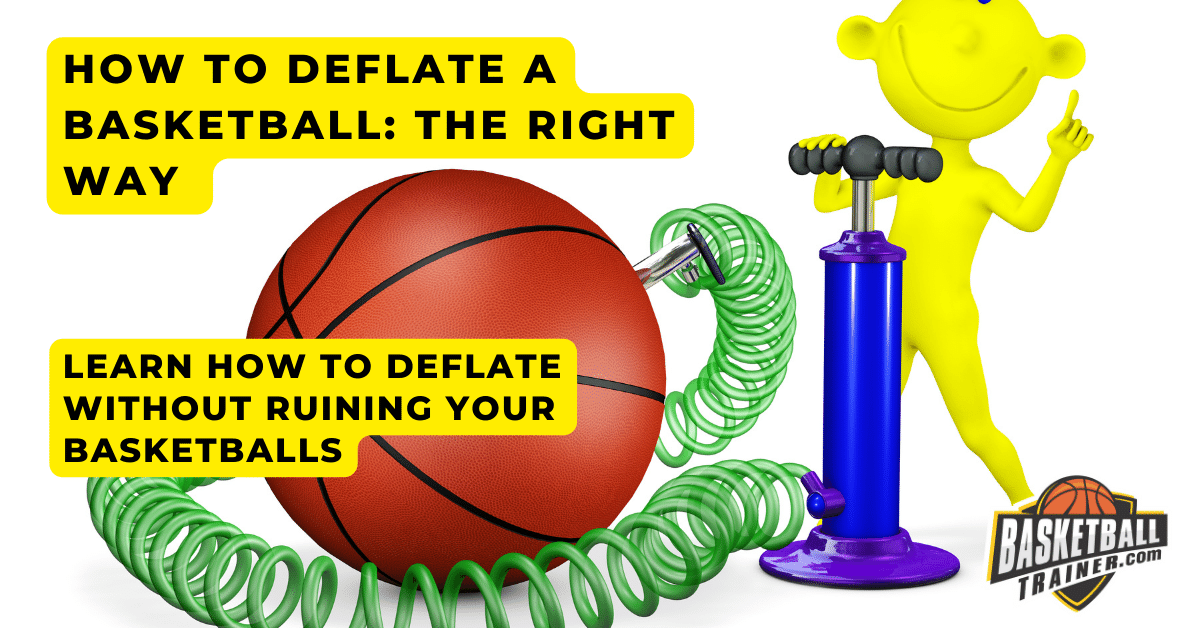
Building The Athletic Resume: How To Guide for College Basketball Recruiting can seem like a daunting task.
Many young athletes find themselves overwhelmed, unsure of where to start or what to include. But here’s the thing…
Your athletic resume is your ticket into the world of college basketball recruiting.
Creating an athletic resume that demonstrates not only your on-court abilities but also reveals the person and student you are can be a great way to stand out in college basketball recruiting. It separates those simply playing high school ball from potential college athletes.
Crafting an impressive Athletic Resume doesn’t have to be intimidating folks!
Take for instance one aspiring athlete we worked with recently; he was clueless about how to present his achievements in a professional manner… until he followed our guide.
The result? He caught the attention of several top-tier colleges!
Table of Contents:
- Understand the Recruiting Process
- Identify Your Strengths
- Create a Professional Resume
- Highlight Your Achievements
- Athletic Resume: Your Guide for Basketball Recruiting
- Utilize Social Media Platforms
- Follow Up With Coaches
- FAQs in Relation to Athletic Resume: How to Guide for College Basketball Rectuiting
- Conclusion
Understand the Recruiting Process
The college basketball recruiting process is a game of strategy, requiring an understanding that goes beyond knowing how to shoot hoops. An essential part of this strategic play involves crafting an impressive athletic resume.
NCAA Eligibility Center
Your first move? Register with the NCAA Eligibility Center. This entity confirms your eligibility for NCAA Division I or II schools based on academic and amateurism criteria. It’s like passing through the gateway into serious college-level sports competition.
You’ll need to meet specific core course requirements during high school and prove you’re still in possession of your amateur status as an athlete – it’s all about making sure you’re ready for recruitment by colleges nationwide.
Scholarship Opportunities
Beyond meeting these prerequisites, another key aspect lies in comprehending scholarship opportunities available at various levels. While Divisions I and II offer athletic scholarships, Division III focuses more on academic ones – each playing field has its own rules.
Athletic scholarships can range from covering just a fraction up to full tuition fees depending upon factors such as talent level and program funds availability. Think strategically: which path will lead you towards achieving both educational goals while pursuing collegiate athletics?
Contacting Coaches
An equally crucial step is learning how best to make contact with coaches; consider this akin to setting out chess pieces before initiating gameplay. Your opening gambit should ideally be via email where you introduce yourself along with attaching your meticulously crafted athletic resume highlighting skills plus achievements within court lines.
Remember patience coupled with persistence often pays off here due to their busy schedules, so don’t get disheartened if the response isn’t immediate.
Lastly, remember relationship building takes time, but having done thorough research about potential colleges’ programs goes a long way in showing genuine interest, thus increasing chances of getting recruited eventually.
Key Takeaway:
Mastering the college basketball recruiting game involves more than just skills on court. It’s about strategic moves – crafting a standout athletic resume, understanding NCAA eligibility rules, exploring scholarship opportunities and tactfully reaching out to coaches. Remember: persistence pays off in this long haul.
Identify Your Strengths
Knowing your strengths as a basketball player is crucial for crafting an effective athletic resume. These are the attributes that set you apart and grab the attention of college coaches.
Evaluating Your Skills
To begin, conduct an honest evaluation of your skills on the court. This may include shooting precision, defensive prowess, or dribbling speed. Don’t overlook intangible qualities like leadership or resilience under pressure.
You can also seek feedback from others during this process – coaches, teammates, and even opponents may offer valuable insights into what makes you stand out as a player.
Showcasing Versatility
Versatility is highly valued in college basketball, so highlighting diverse skills can enhance your appeal to recruiters. For example, if you’re known for being an exceptional shooter but also have strong passing abilities or rebounding statistics, be sure to emphasize these on your resume. Register with the NCAA Eligibility Center, which will provide colleges with more detailed information about your skillset and performance history if possible.
Promoting Unique Strengths
In addition to versatility, having unique strengths can set you apart from other recruits. Perhaps you shine brightest when it comes to free throws? Or maybe your agility allows you to maneuver quickly around defenders – these special talents deserve the spotlight too.
Your standout points don’t need to be strictly physical – showing commitment through consistent training routines and good sportsmanship could tip the scales in your favor when compared to equally talented athletes lacking those traits.
Leveraging Statistics
Basketball is very much a numbers game, so using statistics effectively within your athletic resume is key. Ensure that any included stats accurately reflect your capabilities without exaggeration because honesty goes a long way towards building trust between yourself and potential future coach/team.
Note: Stats aren’t everything though – remember the importance of showcasing well-roundedness and demonstrating character both in off-court and on-court activities too.
Key Takeaway:
Know your basketball strengths and honestly evaluate them, including intangible qualities. Show versatility in skills to attract recruiters and highlight unique talents that set you apart. Use statistics effectively but remember, they aren’t everything – character counts too.
Create a Professional Resume
Creating an athletic resume that stands out to college coaches is your ticket into the world of collegiate basketball. This document isn’t just about showcasing your prowess on the court, but also painting a picture of who you are as an individual and student.
Crafting a resume that stands out to college coaches requires attention not only to the information included, but also how it is displayed. A well-structured, professional-looking resume can significantly increase your chances of catching a coach’s eye.
To help with this process, the NCAA eligibility center offers guidelines for creating resumes tailored specifically towards athletes seeking recruitment by colleges.
Formatting Your Resume
A professionally formatted resume speaks volumes before anyone even reads its content. It should be clean-cut and easy-to-read; bullet points can come in handy when organizing data efficiently under clearly defined headings.
No detail is too small – always proofread meticulously. Even minor errors could potentially create negative impressions or misinterpretations about your diligence or attention to detail.
Including Essential Information
- Basketball Statistics:
Your statistics paint one part of the picture: average points per game (PPG), assists per game (APG), rebounds per game (RPG), etc., alongside any standout performances during games highlight technical skills essential for recruiters’ consideration.
- Athletic Achievements:
All awards received at the club level or tournaments need their spotlight on your resume – these underline competitive spirit and recognition within sport circles.
- Scholastic Records:
Academic achievements matter. Include GPA scores along with notable scholastic accomplishments such as honor roll status or AP courses taken, which show academic dedication paralleling sports commitment.
Add A Personal Statement
A personal statement breathes life into numbers, stats, and accolades. Here’s where you get to express why basketball matters to you, what drives you on the court, and how being part
Key Takeaway:
Crafting an athletic resume for college basketball recruiting goes beyond showcasing court skills. It’s about presenting a well-rounded profile, including academic achievements and personal drive. Remember to format professionally, proofread meticulously, and let your passion shine through in a compelling personal statement.
Highlight Your Achievements
Your athletic resume is a platform to showcase your basketball skills and accomplishments. It’s essential that you highlight these achievements effectively.
Awards and Recognitions
In the world of sports, awards and recognitions are badges of honor showcasing your skillset. Awards and recognitions demonstrate not just skill, but also commitment, diligence and tenacity.
Ensure your resume includes a mention of any MVP or All-Star awards you’ve earned, along with the details such as who gave it to you, when received and why. Include details like who awarded it to you, when it was received, along with reasons for this recognition if possible.
Tournament Wins
The journey from participating in tournaments to clinching victories reflects both individual prowess as well as teamwork capabilities. College coaches highly value such experiences while considering players for their teams.
- List each victory chronologically starting with the most recent ones.
- Add relevant context about the tournament, including the level of competition faced during the final stages, etc.
- Mention specific roles played by yourself contributing towards the team’s success.
Remember: Every win counts.
Team Successes
Beyond personal accolades lies another significant aspect – Team successes.
- Captaincy: If you have ever led a team, mention those years showing leadership qualities which college recruiters greatly appreciate.
- Promotions: Highlight promotions within school/club levels indicating a growth trajectory over time.
- Semifinals/Finals Appearances: Even reaching finals consistently indicates experience at high-level competitions worth mentioning even without title wins.
Note: Always remember, every achievement no matter how small contributes towards building an impressive athletic profile.
Athletic Resume: Your Guide for Basketball Recruiting
Athletic resumes are more than just a showcase of your basketball prowess. They’re an opportunity to paint a holistic picture of who you are, both on and off the court. Including relevant information about yourself can help set you apart from other players with similar skills.
Academic Achievements
In collegiate sports programs, academic performance is often as important as athletic ability. Highlighting your scholastic achievements in your resume—such as GPA scores or honor roll mentions—can demonstrate that you have what it takes to balance academics with athletics.
If there’s any recognition or scholarships tied to your academic efforts, don’t forget them. Such distinctions tell college coaches that they could count on you—a well-rounded athlete able to excel academically while performing at peak levels athletically (NCAA guidelines).
Extracurricular Activities
Beyond schoolwork and sports lies another realm where colleges love seeing involvement: extracurricular activities. Participation here shows interests beyond basketball and demonstrates valuable soft skills like leadership or teamwork abilities.
Volunteer Work
All institutions appreciate students contributing positively back into their communities via volunteer work—it displays character traits like empathy, responsibility, dedication—all qualities recruiters hunt for when scouting potential leaders within teams.
You might’ve volunteered locally at food banks; perhaps tutored younger pupils after classes—the possibilities abound. So remember this crucial part when crafting that perfect athletic resume; every bit helps complete a fuller image.
Utilize Social Media Platforms
In the modern era of digital connectivity, social media platforms have emerged as a crucial tool for ambitious basketball players. These online avenues provide an opportunity to display your prowess on the court and establish meaningful connections with college coaches.
Selecting Your Platform
The initial step is pinpointing the most suitable platform. There’s a plethora of options available such as Facebook, Snapchat, or LinkedIn, but one that particularly resonates with athletes is Instagram. Instagram provides you an avenue to post photos and short video clips showcasing your skills, which can be easily viewed by recruiters.
You might also want to consider YouTube if you’re interested in sharing longer form content like full game footage or detailed skill demonstrations.
Cultivating Your Online Persona
Your online persona should mirror who you are both on and off the court. It’s essential to maintain professionalism across all posts – remember potential colleges will view these profiles not just as a measure of athletic ability but character too.
Ensure that details about yourself such as position played, height/weight stats (for example: ‘6″5′ shooting guard’), high school attended, etc., along with any notable achievements in basketball so far are included prominently within your profile description or posts where relevant.
Fostering Connections
Social media isn’t solely about broadcasting; it’s equally important for fostering connections. Follow accounts related directly towards college basketball recruiting, including those belonging to universities’ teams or specific coaches themselves where appropriate – this could help get noticed.
- Maintain active engagement through comments under their posts without crossing professional boundaries.
- Avoid spamming direct messages; instead, send thoughtful inquiries when necessary.
- Showcase consistency by regularly updating followers regarding training progressions, tournament participation, etc.
Remember each interaction potentially leaves lasting impressions; hence, ensure they align positively towards your overall image.
Key Takeaway:
In the digital age, your social media persona can be a game-changer in college basketball recruiting. Choose platforms like Instagram or YouTube to showcase your skills and achievements. Remember, it’s not just about broadcasting; engage with relevant accounts professionally and consistently for maximum impact.
Follow Up With Coaches
The art of following up with college coaches after submitting your athletic resume is a crucial step in the recruiting process. It’s not just about confirming receipt, but also demonstrating continued interest and dedication to their program.
Maintain Regular Communication
Emails or phone calls every couple of weeks can keep you on a coach’s radar without coming off as overly persistent. Keep these interactions professional yet personable – thank them for considering your application while expressing sincere enthusiasm towards potentially joining their team.
An updated game statistic, an award won, or even academic improvements since sending out your resume should be communicated promptly to show continuous growth both on the court and off it. Here is how to best communicate updates effectively via email.
Showcase Continued Improvement
Achievements don’t stop once you’ve sent that initial resume; they’re ongoing. Letting coaches know about recent accomplishments demonstrates a commitment to constant improvement—a trait highly valued by recruiters everywhere.
- New personal records or improved stats from games played post-application submission are worth mentioning.
- If any new video footage showcasing these developments exists, share those too.
- In the case of a GPA increase due to school year-end results declaration, don’t forget to share this significant update either.
Acknowledge Their Efforts Too
Your communications shouldn’t solely revolve around self-promotion—it’s equally important to acknowledge achievements made under the leadership of the respective coach too. This opens avenues for more meaningful conversations, such as discussing tactics used during challenging matches or congratulating them on well-deserved wins.
This strategy reflects the research done prior to applying, which further solidifies a genuine desire to be part of said program. Remember: persistence pays when balanced appropriately with respectfulness.
Key Takeaway:
Staying on a college coach’s radar after submitting your athletic resume is key. Regular, professional communication and showcasing ongoing achievements can demonstrate dedication to their program. Don’t forget to acknowledge the coach’s successes too – it shows genuine interest and respect for their leadership.
FAQs in Relation to Athletic Resume: How to Guide for College Basketball Rectuiting
How do you write an athletic resume for recruiting?
Start by understanding the recruiting process, identifying your strengths as a player, and creating a professional-looking resume. Highlight your achievements in basketball and include relevant academic information.
How do you write a college athletic resume?
Create a clear structure with sections on personal details, sport-specific skills, awards or recognitions, academic accomplishments, extracurricular activities, and references from coaches or trainers.
What should I put on my athletic resume?
Your athletic resume should feature contact info, sports statistics & metrics specific to your role in the team, any notable achievements or awards received during playtime along with academics and volunteer work.
How do you describe athletic experience on a resume?
List down specifics of your sporting career such as positions played or events participated in. Include stats that demonstrate performance level. Also mention teamwork abilities developed through sports participation.
Conclusion
Creating an Athletic Resume: Your Guide for Basketball Recruiting is no small feat.
But it’s not impossible either.
You’ve learned the importance of understanding the recruiting process.
The power of identifying and showcasing your strengths on paper.
You now know how to create a professional resume that highlights your achievements in basketball.
We discussed including relevant information about you as a student and individual, beyond just being an athlete.
You discovered how social media can be leveraged to get noticed by college coaches.
We emphasized the need for following up with these coaches after submitting your resume too!
All this knowledge equips you to stand out from other recruits vying for those coveted spots on college teams.
Your journey towards becoming a standout collegiate basketball player begins here.
BasketballTrainer.com, as a thought leader in basketball training and player development, is ready to guide you further into this journey.
If you’re looking forward to connecting with expert trainers, exploring innovative training products and apps or gaining more insights…BasketballTrainer.com awaits!





















